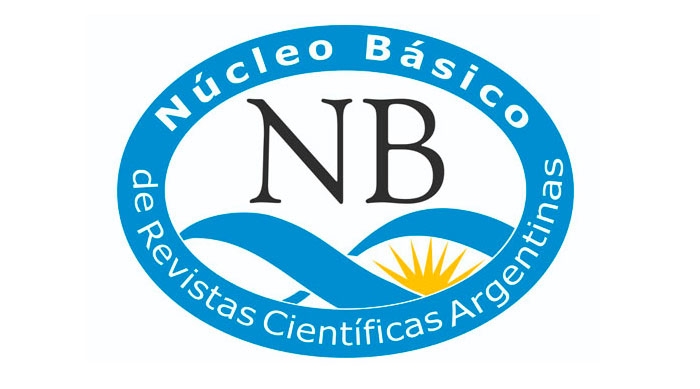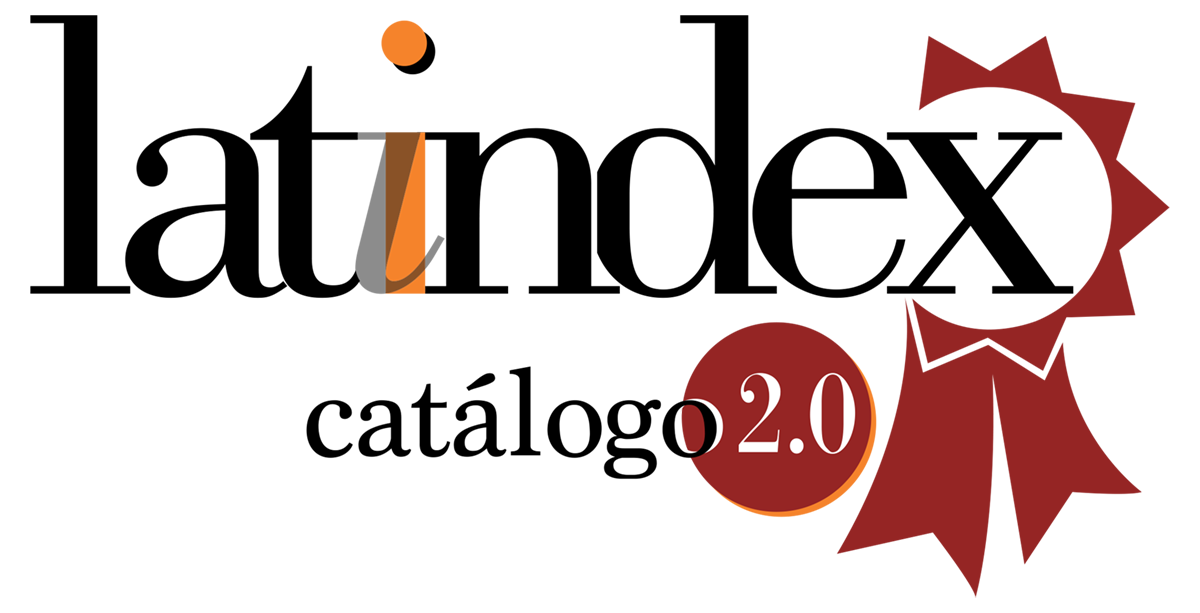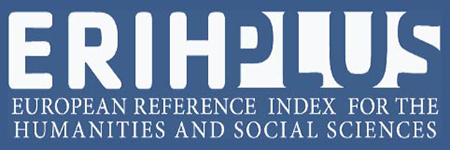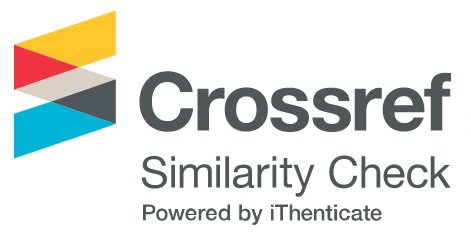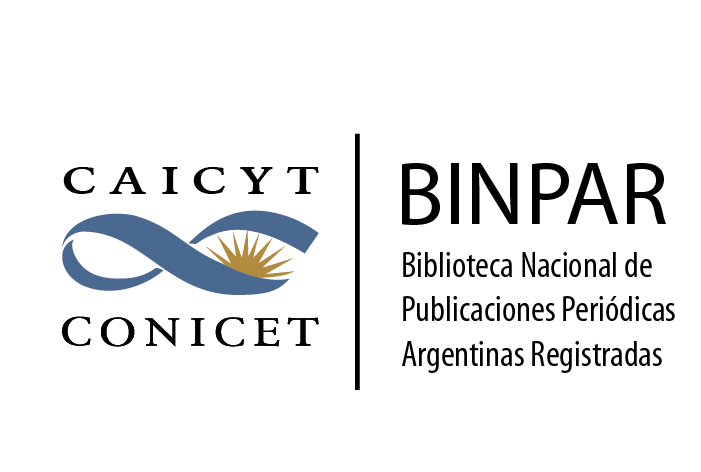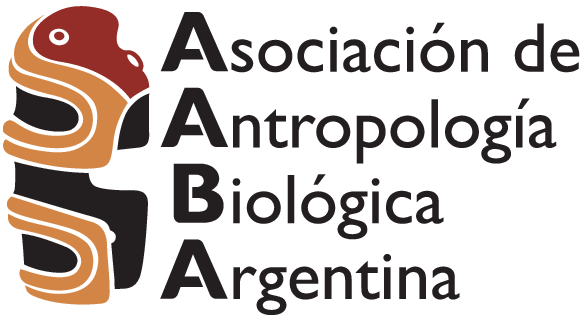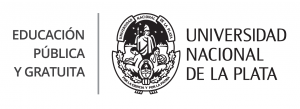La osteocondritis disecante y su potencial relación con el estilo de vida agropastoril del noroeste argentino prehispánico: el sitio Rincón Chico 21 (Santa María, Catamarca)
DOI:
https://doi.org/10.24215/18536387e098Palabras clave:
estrés mecánico, prácticas culturales, economía de subsistencia, paleopatologíaResumen
La osteocondritis disecante es una rara condición patológica caracterizada por la separación de un fragmento de cartílago articular necrótico del hueso subcondral subyacente. Si bien su etiología sería multifactorial, se la asocia principalmente al estrés mecánico. Desde la paleopatología, su análisis ofrece un gran potencial para explorar los modos de vida de las poblaciones pasadas. El objetivo de este trabajo es analizar la expresión de osteocondritis disecante en 57 individuos esqueléticos procedentes del sitio Rincón Chico 21 (Santa María, Catamarca). Este cementerio constituye un área de entierro utilizada entre los períodos de Desarrollos Regionales y de contacto Hispano-Indígena inicial (ca. 1.200-1.550 AD). Los individuos analizados abarcan los rangos etarios comprendidos entre los adolescentes y adultos medios/mayores y ambos sexos están representados. Se registró la presencia de lesiones en 47 elementos pertenecientes al menos a 20 individuos (35,09% de la muestra). La rodilla (26,32% de los individuos) y la articulación metatarsofalángica (15,79% de los individuos) fueron las más afectadas. Los femeninos y los adultos medios/mayores manifestaron mayores prevalencias. Los resultados sugieren que estas poblaciones habrían estado expuestas a altos niveles de estrés mecánico vinculados con las prácticas culturales asociadas a una economía de subsistencia agropastoril.
Descargas
Referencias
Abal de Russo, C. M. (2010). Arte textil incaico en ofrendatorios de la alta cordillera andina: Aconcagua, Llullaillaco, Chuscha. Fundación CEPPA.
Accadbled, F., Vial, J. y Sales de Gauzy, J. (2018). Osteochondritis dissecans of the knee. Orthopaedics & Traumatology: Surgery & Research, 104(1), S97-S105. https://doi.org/10.1016/j.otsr.2017.02.016
Aichroth, P. (1971). Osteochondritis dissecans of the knee: A clinical survey. The Journal of Bone & Joint Surgery British Volume, 53-B(3), 440-447. https://doi.org/10.1302/0301-620X.53B3.440
Andriolo, L., Crawford, D. C., Reale, D., Zaffagnini, S., Candrian, C., Cavicchioli, A. y Filardo, G. (2020). Osteochondritis dissecans of the knee: Etiology and pathogenetic mechanisms. A systematic review. Cartilage, 11(3), 273-290. https://doi.org/10.1177/1947603518786557
Aranda, C., Barrientos, G. y Del Papa, M. (2014). Código deontológico para el estudio, conservación y gestión de restos humanos de poblaciones del pasado. Revista Argentina de Antropología Biológica, 16(2), 111-113.
Arrieta, M. A., Bernardi, L., Bordach, M. D. L. A. y Mendonça, O. J. (2016). Violencia interpersonal en el noroeste argentino prehistórico: expresiones regionales, socioculturales y cronológicas. Estudios Atacameños, 53, 75-92.
Arrieta, M. A., Bordach, M. A. y Mendonca, O. J. (2014). Pre‐Columbian tuberculosis in Northwest Argentina: Skeletal evidence from Rincón Chico 21 cemetery. International Journal of Osteoarchaeology, 24(1), 1-14. https://doi.org/10.1002/oa.1300
Arrieta, M. A., Bordach, M. D. L. A. y Mendonça, O. J. (2011). Tuberculosis precolombina en el noroeste argentino (NOA): El cementerio de Rincón Chico 21 (RCH 21), Santa María, Catamarca. Intersecciones en Antropología, 12(2), 245-260.
Arrieta, M. A. y Mendonça, O. J. (2011). Enfermedad degenerativa articular y uso del cuerpo en Rincón Chico 21 (Santa María, Catamarca). Revista Argentina de Antropología Biológica, 13(1), 3-17.
Aufderheide, A. C. y Rodriguez-Martin, C. (1998). The Cambridge encyclopedia of human paleopathology. (1ª ed.). Cambridge University Press.
Barrie, H. (1987). Osteochondritis dissecans 1887-1987. A centennial look at Konig’s memorable phrase. The Journal of Bone & Joint Surgery British Volume, 69-B(5), 693-695. https://doi.org/10.1302/0301-620X.69B5.3316236
Barrientos, G. (1997). Nutrición y dieta de las poblaciones aborígenes prehispánicas del sudeste de la región pampeana [Tesis de doctorado, Universidad Nacional de La Plata]. http://sedici.unlp.edu.ar/handle/10915/4657
Bauer, M., Jonsson, K. y Linden, B. (1987). Osteochondritis dissecans of the ankle. A 20-year follow-up study. The Journal of Bone & Joint Surgery British Volume, 69-B(1), 93-96. https://doi.org/10.1302/0301-620X.69B1.3818743
Bohndorf, K. (1998). Osteochondritis (osteochondrosis) dissecans: A review and new MRI classification. European Radiology, 8, 103-112. https://doi.org/10.1007/s003300050348
Bojanić, I., Smoljanović, T. y Kubat, O. (2011). Osteochondritis dissecans of the first metatarsophalangeal joint: Arthroscopy and microfracture technique. The Journal of Foot and Ankle Surgery, 50(5), 623-625. https://doi.org/10.1053/j.jfas.2011.04.028
Bojsen-Møller, F. y Lamoreux, L. (1979). Significance of free dorsiflexion of the toes in walking. Acta Orthopaedica, 50(4), 471–479. https://doi.org/10.3109/17453677908989792
Bourbou, C. (2010). Health and disease in Byzantine Crete (7th–12th centuries AD). (1ª ed.) Routledge. https://doi.org/10.4324/9781315586311
Bradley, J. y Dandy, D. (1989). Osteochondritis dissecans and other lesions of the femoral condyles. The Journal of Bone & Joint Surgery British Volume, 71-B(3), 518-522. https://doi.org/10.1302/0301-620X.71B3.2722949
Buikstra, J. E. y Ubelaker, D. H. (1994). Standards for data collection from human skeletal remains. Arkansas Archaeological Survey.
Dastugue, J. y Gervais, V. (1992). Paléopathologie du squelette humain. L’Homme et ses origines. Boubée.
Davies, M. S. y Saxby, T. S. (1999). Arthroscopy of the first metatarsophalangeal joint. The Journal of Bone & Joint Surgery British Volume, 81-B(2), 203-206. https://doi.org/10.1302/0301-620X.81B2.0810203
Debnath, U. K., Hemmady, M. V. y Hariharan, K. (2006). Indications for and technique of first metatarsophalangeal joint arthroscopy. Foot & Ankle International, 27(12), 1049-1054. https://doi.org/10.1177/107110070602701209
Desai, S., Patel, M., Michelli, L., Silver, J. y Lidge, R. (1987). Osteochondritis dissecans of the patella. The Journal of Bone & Joint Surgery British Volume, 69-B(2), 320-325. https://doi.org/10.1302/0301-620X.69B2.3818768
Edwards, D. y Bentley, G. (1977). Osteochondritis dissecans patellae. The Journal of Bone & Joint Surgery British Volume, 59-B(1), 58-63. https://doi.org/10.1302/0301-620X.59B1.845229
Egger, A. C. y Saluan, P. (2018). Osteochondritis Dissecans of the Knee. En A. Rozim Zorzi y J. Batista de Miranda (Eds.), Cartilage repair and regeneration (pp. 123-141). IntechOpen. http://dx.doi.org/10.5772/intechopen.70275
Flick, A. B. y Gould, N. (1985). Osteochondritis dissecans of the talus (transchondral fractures of the talus): Review of the literature and new surgical approach for medial dome lesions. Foot & Ankle International, 5(4), 165-185. https://doi.org/10.1177/107110078500500403
Garcilaso de la Vega, I. (1991). Comentarios reales de los Incas. (Vol. I). Fondo de Cultura Económica. (Trabajo original publicado en 1609).
González, A. R. (1950). Contextos culturales y cronología relativa en el área central del N. O. argentino: (nota preliminar). Anales de Arqueología y Etnología, 11, 7-32.
Greco, C. (2014). La cronología del Valle de Yocavil. Escaladas, datos y resultados. Arqueología, 20(3), 217-240. https://doi.org/10.34096/arqueologia.t20.n0.1578
Hefti, F., Beguiristain, J., Krauspe, R., Möller-Madsen, B., Riccio, V., Tschauner, C., Wetzel, R. y Zeller, R. (1999). Osteochondritis dissecans: A multicenter study of the European Pediatric Orthopedic Society. Journal of Pediatric Orthopaedics, 8(4), 231-245.
Hernández Vidal, G., Mora Valdez, F. A., Rodríguez Tovar, L. E. y Ramírez Romero, R. (2011). Etiología, patogénesis, diagnóstico y tratamiento de osteocondrosis (OC). Veterinaria México, 42(4), 311-329.
Jacobs, J. C., Archibald-Seiffer, N., Grimm, N. L., Carey, J. L. y Shea, K. G. (2015). A review of arthroscopic classification systems for osteochondritis dissecans of the knee. Orthopedic Clinics of North America, 46(1), 133-139. https://doi.org/10.1016/j.ocl.2014.09.009
Joukainen, A., Virén, T., Penttilä, P., Liukkonen, J., Puhakka, P. H., Kröger, H. y Töyräs, J. (2017). Ultrasound arthroscopy of hip in treatment of osteochondritis dissecans. Arthroscopy Techniques, 6(4), e1063-e1068. https://doi.org/10.1016/j.eats.2017.03.022
Kessler, J. I., Nikizad, H., Shea, K. G., Jacobs Jr, J. C., Bebchuk, J. D. y Weiss, J. M. (2014). The demographics and epidemiology of osteochondritis dissecans of the knee in children and adolescents. The American Journal of Sports Medicine, 42(2), 320-326. https://doi.org/10.1177/0363546513510390
Kessler, J. I., Weiss, J. M., Nikizad, H., Gyurdzhyan, S., Jacobs Jr, J. C., Bebchuk, J. D. y Shea, K. G. (2014). Osteochondritis dissecans of the ankle in children and adolescents: Demographics and epidemiology. The American Journal of Sports Medicine, 42(9), 2165-2171. https://doi.org/10.1177/0363546514538406
Kessler, J. I., Jacobs Jr, J. C., Cannamela, P. C., Weiss, J. M. y Shea, K. G. (2018). Demographics and epidemiology of osteochondritis dissecans of the elbow among children and adolescents. Orthopaedic Journal of Sports Medicine, 6(12). https://doi.org/10.1177/2325967118815846
Lee, J. E., Ryu, K. N., Park, J. S., Cho, Y. J., Yoon, S. H., Park, S. Y. y Lee, K. R. (2014). Osteochondral lesion of the bilateral femoral heads in a young athletic patient. Korean Journal of Radiology, 15(6), 792-796. https://doi.org/10.3348/kjr.2014.15.6.792
Linden, B. (1977). Osteochondritis dissecans of the femoral condyles: A long-term follow-up study. The Journal of Bone & Joint Surgery, 59(6), 769-776.
Linden, B., Jonsson, K. y Redlund‐Johnell, I. (2003). Osteochondritis dissecans of the hip. Acta Radiologica, 44(1), 67-71.
McWhirr, A., Viner, L. y Wells, C. (1982). Romano-British cemeteries at Cirencester. Cirencester Excavation II. Cirencester Excavation Committee.
Mei-Dan, O., Mann, G., Steinbacher, G., Cugat, R. B. y Alvarez, P. D. (2009). Bilateral osteochondritis dissecans of the knees in monozygotic twins: The genetic factor and review of the etiology. American Journal of Orthopedics (Belle Mead NJ), 38(9), E152-5.
Mendonça, O. J., Bordach, M. A. y Arrieta, M. A. (2012). El comportamiento mortuorio en TiL 43 y RCh 21 del tardío al hispano-indígena: Continuidades, transformaciones y rupturas materiales y simbólicas. Perspectiva regional. Pacarina. Arqueología y Etnografía Americana, 7, 67-82.
Morlon, P., Bourliaud, J., Reau, R. y Hervé, D. (1996). Una herramienta, un símbolo, un debate: La chaquitaclla y su persistencia en la agricultura andina. En P. Morlon (Ed.), Comprender la agricultura campesina en los Andes centrales (pp. 38-83). Institut Français d’Études Andines. https://doi.org/10.4000/books.ifea.2651
Mubarak, S. J. y Carroll, N. C. (1981). Juvenile osteochondritis dissecans of the knee: Etiology. Clinical Orthopaedics and Related Research, 157, 200-211.
Murray, R. O., Jacobson, H. G. y Stocker, D. J. (1990). The radiology of skeletal disorders. Volume 1: Fundamentals of skeletal radiology (3ª ed.). Churchill Livingstone.
Nastri, J. (2018). Santa María, geography and culture of. En C. Smith (Ed.), Encyclopedia of Global Archaeology (pp. 1-19). Springer. https://doi.org/10.1007/978-3-319-51726-1_2582-1
Olsson, S. E. y Reiland, S. (1978). The nature of osteochondrosis in animals. Summary and conclusions with comparative aspects on osteochondrosis dissecans in man. Acta Radiologica Supplements, 358, 299-306.
Onoda, S., Sugita, T., Aizawa, T., Ohnuma, M. y Takahashi, A. (2012). Osteochondritis dissecans of the knee in identical twins: A report of two cases. Journal of Orthopaedic Surgery, 20(1), 108-110. https://doi.org/10.1177/230949901202000123
Orphanet. (s.f.). Osteochondritis dissecans. Orphanet. Recuperado el 12 de noviembre de 2024 de https://www.orpha.net/en/disease/detail/2764?search=Osteochondritisdissecans&mode=name
Peters, T. A. y McLean, I. D. (2000). Osteochondritis dissecans of the patellofemoral joint. The American Journal of Sports Medicine, 28(1), 63-67. https://doi.org/10.1177/03635465000280012201
Reilly, D. T. y Martens, M. (1972). Experimental analysis of the quadriceps muscle force and patellofemoral joint reaction force for various activities. Acta Orthopaedica, 43(2), 126-137. https://doi.org/10.3109/17453677208991251
Rodríguez Martín, C. (2000). Osteocondritis disecante en poblaciones del pasado: una revisión sobre su etiología, fisiopatología y epidemiología, con especial referencia a Canarias. Eres. Arqueología/Bioantropología, 9, 201-219.
Sampaio, A. R. de A. (2020). Osteocondrite dissecante. Estudo de lesões no membro inferior em indivíduos não adultos e adultos da colecção de esqueletos identificados de Coimbra (séculos XIX-XX) [Tesis de Maestría, Universidad de Coimbra]. https://hdl.handle.net/10316/92510
Schenck Jr., R. C. y Goodnight, J. M. (1996). Current concepts review, osteochondritis dissecans. The Journal of Bone and Joint Surgery, 78(A), 439-456.
Schindler, O. S. (2007). Osteochondritis dissecans of the knee. Current Orthopaedics, 21(1), 47-58. https://doi.org/10.1016/j.cuor.2006.11.006
Schwartz, R. S. (1991). Foot orthoses and materials. En M. H. Jahss (Ed.), Disorders of the foot and ankle: Medical and surgical management (2ª ed., vol. III, pp. 2866-2878). W. B. Saunders Company.
Sinnatamby, C. S. (2011). Last’s anatomy regional and applied (12ª ed.). Churchill Livingstone.
Smillie, I. S. (1960). Osteochondritis dissecans. E. & S. Livingstone.
Tarragó, M. N. (1987). Sociedad y sistema de asentamiento en Yocavil. Cuadernos del Instituto Nacional de Antropología y Pensamiento Latinoamericano, 12(1), 179-196.
Tarragó, M. N. (1998). El patrimonio del valle de Santa María en peligro. En R. Ceballos (Ed.), Homenaje a Alberto Rex González: 50 años de aportes al desarrollo y consolidación de la antropología argentina (pp. 205-253). Facultad de Filosofía y Letras, Universidad de Buenos Aires.
Tarragó, M. N. (2000). Chacras y pukará. Desarrollos sociales tardíos. En M. N. Tarragó (Ed.), Los pueblos originarios y la conquista (pp. 257-300). Editorial Sudamericana.
Tarragó, M. N. (2011). Poblados tipo pukara en Yocavil. El plano de Rincón Chico 1 (Catamarca, Argentina). Estudios Sociales del NOA: Nueva Serie, 11, 33-62.
Tarragó, M. N., Bordach, M. A. y Mendonça, O. J. (2005). El cementerio de Rincón Chico 21, Santa María (Catamarca). Cuadernos de la Facultad de Humanidades y Ciencias Sociales-Universidad Nacional de Jujuy, 29, 9-21.
Tineo, A. (2005). Estudios hidrogeológicos del valle del río Santa María-Provincia de Catamarca. Instituto Superior de Correlación Geológica (INSUGEO).
Todd, L. y Frison, G. (1992). Reassembly of bison skeletons from the Horner site: A study in anatomical refitting. En J. L. Hofman y J. G. Enloe (Eds.), Piecing together the past: Applications of refitting studies in archaeology (pp. 63-82). BAR International Series.
Turek, S. L. (1982). Ortopedia: principios y aplicaciones. Salvat.
Vikatou, I., Hoogland, M. L. y Waters-Rist, A. L. (2017). Osteochondritis dissecans of skeletal elements of the foot in a 19th century rural farming community from The Netherlands. International Journal of Paleopathology, 19, 53-63. https://doi.org/10.1016/j.ijpp.2017.09.005
Vitry, C. (2014). Los calzados utilizados por los Incas para las altas montañas. Revista Haucaypata. Investigaciones Arqueológicas del Tahuantinsuyo, 3(8), 91-109.
Waldron, T. (2009). Palaeopathology. Cambridge University Press.
Wells, C. (1974). Osteochondritis dissecans in ancient British skeletal material. Medical History, 18(4), 365–369. https://doi.org/10.1017/S0025727300019815
Yildirim, O. S., Okur, A. y Erman, Z. (2004). Osteochondritis dissecans of the acetabulum: A case report. Joint Bone Spine, 71(2), 160-161. https://doi.org/10.1016/j.jbspin.2003.10.018
Zanon, G., DI Vico, G. y Marullo, M. (2014). Osteochondritis dissecans of the knee. Joints, 2(1), 29-36.
Zúñiga Thayer, R., Suby, J., Flensborg, G. y Luna, L. (2018). Osteocondritis disecante. Primeros resultados en restos humanos de cazadores-recolectores del Holoceno en Patagonia austral. Revista del Museo de Antropología, 11(1), 107-120. https://doi.org/10.31048/1852.4826.v11.n1.18882
Descargas
Publicado
Número
Sección
Licencia
Derechos de autor 2025 Mario A. Arrieta, Ingrid Boasso, Lila BernardiLa RAAB es una revista de acceso abierto tipo diamante. No se aplican cargos para la lectura, el envío de los trabajos ni tampoco para su procesamiento. Asímismo, los autores mantienen el copyright sobre sus trabajos así como también los derechos de publicación sin restricciones.






